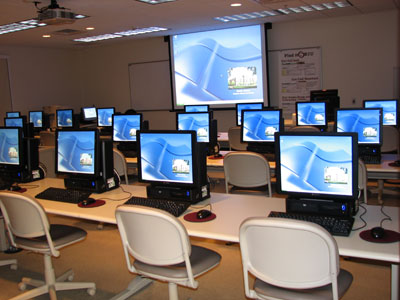
As more and more universities around the world move towards e-Learning in order to enhance their educational offerings, I, as an e-Learning enthusiast, have noticed a few trends emerging, which I would like to see universities in Pakistan adopt.
Collaboration among students
You often find international undergraduate and graduate students working collaboratively on projects and even assignments using discussion forums, chats, and social networking sites like Facebook. They then turn these discussion forum/chat/social networking site posts as a basis for collaborative websites (wikis) or podcasts, which they then add to their e-Portfolios as proof of their knowledge and experience. This, I feel, is a wonderful way to learn socially, and, contrary to popular belief, it’s not cheating!
Additionally, broadcasts of, for example, live surgeries and other procedures are also becoming commonplace and are being supplemented with the use of virtual worlds, such as Second Life, for a more “hands-on” approach to learning. Though these strategies are resource intensive, with proper planning and budgeting, they can work within the Pakistani context.
Collaboration among faculty
The concept of the stuffy, old faculty lounge, with its stale coffee (or tea, as in the case of Pakistan), is fast becoming obsolete, as international faculty turn towards Web 2.0 tools in order to develop rich, interactive lesson plans, which tend to add a significant technological component into the mix (how significant, of course, depends on the situation).
They also share their experiences by blogging (hey, that’s what I’m doing!) or through social networking sites, particularly LinkedIn, which awards them the additional benefit of getting their name “out there”, as well as offering them the opportunity to learn from others’ successes and shortcomings. This, you could say, is an informal sort of publication, although formal publications may arise out of it too!
Communication with faculty from other campuses of one’s institution and also from partner institutions via Skype (or other VoIP software) is also the norm, and teaching students at multiple sites via “e-classrooms” is quickly gaining popularity.
Breaking the confines of physicality
A university, if it is worth its salt, organizes many educational activities (seminars and conferences) throughout the year, but, due to physical space limitations, the number beneficiaries from these activities is reduced. Fortunately, the Web, broadly-speaking, doesn’t have such limitations. Therefore, you often find international universities broadcasting such events online for a large number of participants, who may join from their homes, offices, or even their mobiles! With regard to this, I am pleased to say that Pakistani universities are doing this, but an increase in the number of these “e-sessions” is needed.
Breaking with tradition
It is my view that Pakistani universities will have to break with tradition and seriously consider adopting as many of the trends which I’ve mentioned above in order to compete with the world.

No comments:
Post a Comment